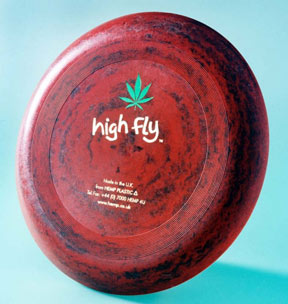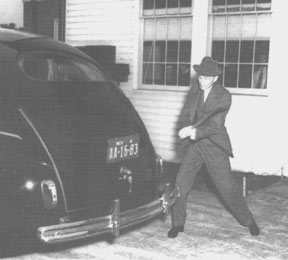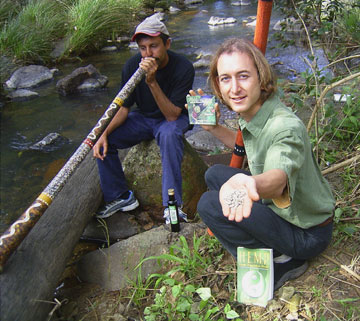Hemp Plastic – How Is It Made – What Is It Used For



Long ago, I had the opportunity to travel to the Himalayas. The most striking feature I remember, after the mountains, was the rubbish along the paths of nature’s paradise–rubbish made up of plastic bottles and plastic bags.
It has long been my dream to offer an alternative to plastics–ideally something biodegradable, something plant-based.
Henry Ford’s first motorcar used plant-based fibers in the body and an early picture of a hammer-wielding Mr. Ford showed the world how strong plant fibers were in reinforcing manmade materials. Ford’s work was stymied by the 1937 “Marijuana” Tax Act.
In 1998, I was asked if I would like to “make a hemp plastic”. I jumped at the opportunity. According to the dictionary, the “plastic” is “anything mouldable, pliant, supple.” This doesn’t have to entail using petrochemicals.
Plastics and petrochemical-based materials are used in almost everything around us, from countertops to pens, toothbrushes, computers, radios, light fittings, entertainment centers for flat screen TVs…, the list goes on.
My goal was to produce a plant-based alternative that was cheap, just as mouldable, as strong as or stronger than petro-plastic, and that could have a controlled shelf life (rather than last forever on our mountaintops and in our urban landfills).

The first material I tried was a mix of 25% hemp fibers in a polypropylene base. These plastic pellets were by no means ideal, but they were certainly a step forward, 25% further, in fact. The first product, a frisbee called “High Fly”, was used as a business card, saying “This is what we can do now. Guess what else we could do with a little support?”
That support did not come. People loved the idea (the “High Flys” soon sold out), but finance was not available for further research and development.
Only slightly daunted, I searched the world for others working in similar fields and found a European company which had patented a material even more ideal. Using 100% hemp fibers, no resins, glues or binders–just hemp and water, they produced a material that could be molded like papier-mache. More impressively, when dried the material was hard as stone; they called it “Hemp Stone”.

Realizing that more awareness about current technologies is needed, I developed a new hemp plastic product. Working with the original “High Fly” technology, we refined the hemp-plastic pellet. We then injection-molded it to produce a Hemp Plastic CD case.
Then, using the 100% Hemp Stone, we built a mold to produce didgeridoos. Australian aboriginals support this idea, because Northern Australian rainforests are being decimated in part to mass-produce didgeridoos–cut by machines and painted with prints–leaving little profit for Aborigines, yet stripping them of their greatest wealth; nature. Local artists will paint the hemp didgeridoos that we plan to manufacture here in bulk, with profits being fairly distributed.

These musical instruments “sound better than 95% of my didgeridoos,” according to Gumaroy, a professional Aborigine didgeridoo player.
The hemp didgies can be sold to tourists, who will have an authentic piece of artwork, and know they are supporting a renewable hemp industry rather than the logging industry.
I then assembled local musicians–a harp player, a professional flutist, a world-class guitar player and some angels who came to sing with us. In a professional studio run by Cutting-Edge, we created a relaxation and music CD called Fields of Green, based around the sounds of the 100% hemp didgeridoo.

The last track is a prayer dedicated to the Children of Mother Earth created and sung by Gumaroy, our main indigenous representative. I’ve packaged the CD in a CD case containing a hemp plastic tray. This is a world first and the hemp CD case is a limited edition piece of history. You can get your hands on one while stocks last, via www.hempmusic.com, and support further hemp plastic research, development, and production.
Now, I’m researching the technology to produce plant-based biodegradable plastic bags and water containers. I now work with several research and development companies in Europe, Asia, and Australia. Through these collaborations, a number of materials are now available that include up to 40% hemp plastics and totally biodegradable hemp and lignin plastics. Starch and hemp plastics are other biodegradable materials ready for production.
All of the above-mentioned materials are developed. Hemp plastics now exist and are ready for commercial production.
Prices range from 10% to100% more expensive than petro-plastics. As demand grows, economies of manufacturing scale will reduce the per-unit prices. A larger consideration for manufacturers is whether they can find a reliable hemp supply in the current volatile political situation.
Further information on hemp plastics available at www.hempmusic.com and www.hempplastic.com.
Henry Ford used hemp-and-sisal cellulose plastic to build car doors and fenders in 1941. On video, Henry Ford demonstrated that his hemp cars were more resistant to blows from a sledgehammer than steel-bodied cars were.
The basic building block of plastics is cellulose taken from petroleum, but toxic petrochemical compositions are not the only way to derive plastics.
The hemp plant has literally hundreds of uses, food, nutrition and building are just a few of the more traditional applications.
Recently, however, CBD oil derived from hemp has become extremely popular worldwide, and the high CBD flowers are gaining popularity as a relaxing, non-psychoactive cannabis substitute.
When all of the valuable components have been extracted from hemp, all that is left is the stalks.
And hemp stalks are packed full of cellulose!
Plastics can be derived from plant cellulose, and since hemp is the greatest cellulose producer on Earth (hemp hurds can be 85% cellulose), it only makes sense to make non-toxic, biodegradable plastic from hemp and other organics, instead of letting our dumps fill up with refuse.
A recent technological advance with biodegradable plastics made from cornstarch has led to a new material based on hemp. Hemp Plastics (Australia) have sourced partners who have been able to produce a new 100% biodegradable material made entirely from hemp and corn. This new material has unique strength and technical qualities which have yet to be seen before, and this new material can be injection or blow-moulded into virtually any shape using existing moulds, including cosmetic containers, Frisbee golf discs, etc.
Hemp hurds may be processed into cellophane packing material, which was common until the 1930s, or they may be manufactured into a low-cost, compostable replacement for Styrofoam.
Zellform (Austrian) has created a hemp-plastic resin called Hempstone, for use in musical instruments, loudspeakers, and furniture. This material can be carved into any desired form.
Hemp can also be made into compressed door panel and dashboards. UK car makers are utilising hemp plastic for some components and carmakers such as Ford, GM, Chrysler, Saturn, BMW, Honda, and Mercedes are currently using hemp composite door panels, trunks, headliners, etc.
These composites are less expensive than dangerous fibreglass counterparts. Hemp fibreglass replacements would only cost 50 to 70 cents a pound. These hemp composites could replace carbon and glass fibers, which have environmental and weight problems, and run from 60 cents to 5 dollars a pound.
The reason why virtually all European car makers are switching to hemp-based door panels, columns, seat backs, boot linings, floor consoles, instrument panels, and other external components is that the organic hemp-based products are lighter, safer in accidents, recyclable, and more durable.
The possibilities are endless with hemp plastics and resins, and Biocomposites. Virtually any shape and purpose can be fulfilled by biocomposite plastics. Just think of the possibilities and realize that biodegradable non-toxic products are always the wisest choice for the future. Buy smart. Buy Hemp.

This article first
appeared in
Hemphasis Magazine.
Thanks to Bob Newland.